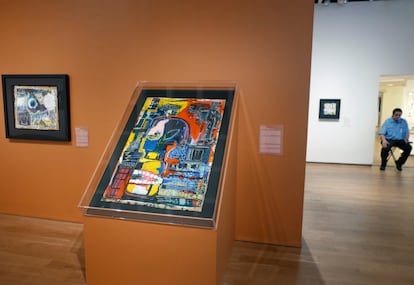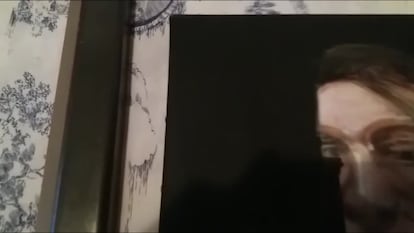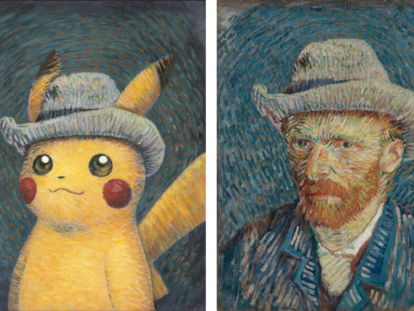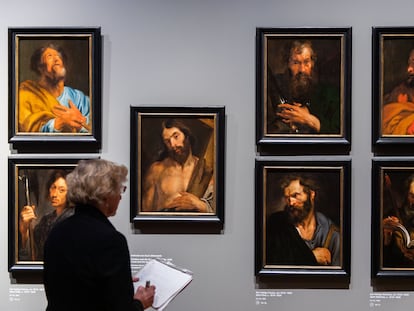The unending fight against fake works of art
Counterfeits are proliferating on the market thanks to fraudulent certificates, the hunt for a bargain, and the ability of scammers to convince collectors

Juanjo Águila, a captain of the Spanish Civil Guard and head of the Historical Heritage section of the UCO, answers the phone from the Milan airport. With his team, he has been tracking fake works, thefts, looting, and all kinds of artistic fraud for seven years. Airports, he acknowledges, are one of the favorite places for counterfeiters to introduce forgeries onto the market.
And who are the most faked artists? “Everything that has value. Sorolla, Juan Gris, Rusiñol, Dalí, Goya. However, I believe that the Vollard Suite, by Picasso, is the most falsified multiple [graphic] work in the world. But also the old masters.”
The fakes are never ending. “And many remain unknown. The buyer is usually a person with high purchasing power and social prestige, and does not want to appear to have been deceived,” Captain Águila continues. Fraudsters know the human condition. “They are very skilled people, they know the ways to get innocent people to lower their guard,” he observes. And sometimes it involves millions of dollars. It could be the plot for a series on Netflix. They falsify the certificates, even using real notary seals and use typewriters with ink from the fraudulent time of certification to recreate them. “Sometimes they use books, some we have found, that have compiled artists’ signatures, and they rehearse them, a thousand times, on pages and pages, until they are very similar,” adds Águila.
The conversation continues. In the background, there are the voices of travelers and the airport’s public address system.
“Sometimes there is downright stupidity. Like a supposed Picasso from 1922 that had a Nazi seal stamped on the painting itself and not on the back [the logical place for it] that the criminals were pretending had been looted. There are also works that are a pastiche, but that the buyer, who is inexperienced, purchases because they believe they is getting a great deal.”
The captain cannot talk about ongoing investigations, such as the thefts of Madrid’s Bacons, nor does he provide figures for pieces, but he warns that the business is booming. Maybe because forging has been going on for centuries. And other countries — according to sources familiar with this “market” — are at the same level of deception as Spain.
How is human error distinguished from deception? The image that accompanies this report (it is the best quality available) shows the canvas The Capitulations of Charles IV (1808), 60 x 80 cm. It even appears referenced in a catalogue. And subjected to expert opinion, the “expert” writes: “The seal stamped here is a guarantee that the painting represented, The Capitulations of Charles IV, was executed by Francisco de Goya y Lucientes. This same seal and signature is also found in the authentication document and in the partial photos taken of the painting, where the small signatures are located. The scientific-technical studies having been verified by myself,” signed by the Goya expert technician [with name and surname]. For complete confidence, sign and seal it. When the image is shown to someone who is perhaps the world’s leading authority on the artist, but who prefers not to be cited, he certifies it in two words: “A horror.”
The touchstone of how far greed can go may be the American artist Jean-Michel Basquiat and the colossal prices his paintings fetch. Last June, the Orlando Museum of Art (OMA) had to cancel its Heroes and Monsters exhibition because the 25 works on display were all fakes. The FBI seized them immediately.

The history of how these “unknown” works appeared is like the plot from a theatre play. The alleged Basquiats were acquired by screenwriter Thad Mumford (famous for his work in the 1970s on the hit T.V. series M*A*S*H). Then, they were lost for some time until Los Angeles auctioneer Michael Barzman found them by chance at an abandoned storage locker sale. But since Basquiat had lived in Los Angeles in 1982 and had prepared an exhibition for the Gagosian gallery, there was something of a fit. The problem is that the works, most of them on cardboard, were extremely poor quality. Still, business continued.
The fraud was set in motion in 2012 by Barzman himself, beset by financial problems, as he ended up acknowledging; and the bar accused former OMA director Aaron De Groft of being involved. He was fired immediately but he has “categorically” denied having anything to do with the deception in The New York Times and even maintains, against all logic, that the Basquiats are real. The museum has lost its reputation and hundreds of thousands of dollars.
A €12 million fake
Another Basquiat, thousands of miles away, looks real. Kept in the shade, to protect it, for years it had been in a salon of one of the best Spanish collections of American painting from the 1980s and 1990s. A collection of more than 500 works in Castilla-Léon. The owner has declined to publish the image. Although it can be described. A human figure with large teeth and a kind of halo of spikes on its head, standing on a structure of interlocking boards, framed in black and, at its base, two words in large boxes: Ribs and Sports. The painting measures one meter by one meter, and it has been priced at around €12 million ($12.7 million). But it’s a fake. The work was acquired in the 1980s by the collector’s father, who he started the process of authenticating it. “We sent a form to the authentication committee [controlled by Basquiat’s family] with the details of the work, the annotations on the back, the purchase documents, the history [of the provenance] that we had, high-quality photos and a check for the services,” recalls the collector’s son. An expert even came to see it in person. However, the committee ruled that it was not the artist’s.
Sometimes this seriousness is missing from some auction houses that sell works by old masters, without pigment studies or even a simple x-ray, for millions of dollars. Christie’s talks about “detailed cataloguing” and Sotheby’s acquired Orion Analytical Lab in 2016, a tool to prevent this type of fraud. But they have the same problem as always: the anarchy of the unregulated market.
Some institutions try to bring order. “The Prado has not made appraisals,” explains a spokesman for the art gallery, “since the official state bulletin of August 5, 1970, published an order stating that museums that depend on the state should refrain from carrying out appraisals or expert reports on works of art.” Even some conservatives have received death threats. Today it only responds, in writing, to the requests of the Board of Qualification, Valuation and Exportation of Goods (dependent on the Ministry of Culture and Sports). Legally, forgery is not classified as a crime, only if there is an intention to defraud. That is, passing it off as an original with the aim of making a profit. If found guilty, a fraudster can be given a prison sentence of one to six years, as established under Article 250 of the Spanish Penal Code.
Sign up for our weekly newsletter to get more English-language news coverage from EL PAÍS USA Edition
Tu suscripción se está usando en otro dispositivo
¿Quieres añadir otro usuario a tu suscripción?
Si continúas leyendo en este dispositivo, no se podrá leer en el otro.
FlechaTu suscripción se está usando en otro dispositivo y solo puedes acceder a EL PAÍS desde un dispositivo a la vez.
Si quieres compartir tu cuenta, cambia tu suscripción a la modalidad Premium, así podrás añadir otro usuario. Cada uno accederá con su propia cuenta de email, lo que os permitirá personalizar vuestra experiencia en EL PAÍS.
¿Tienes una suscripción de empresa? Accede aquí para contratar más cuentas.
En el caso de no saber quién está usando tu cuenta, te recomendamos cambiar tu contraseña aquí.
Si decides continuar compartiendo tu cuenta, este mensaje se mostrará en tu dispositivo y en el de la otra persona que está usando tu cuenta de forma indefinida, afectando a tu experiencia de lectura. Puedes consultar aquí los términos y condiciones de la suscripción digital.
More information
Archived In
Últimas noticias
Most viewed
- Alain Aspect, Nobel laureate in physics: ‘Einstein was so smart that he would have had to recognize quantum entanglement’
- The US bombing of Venezuela, in pictures
- Maps of the US attack on Venezuela: Targets, airspace and deployed fleet
- Oil, gold and rare earth elements: the backdrop to US political tension with Venezuela
- Delta Force, the elite US military unit that captured Maduro











































